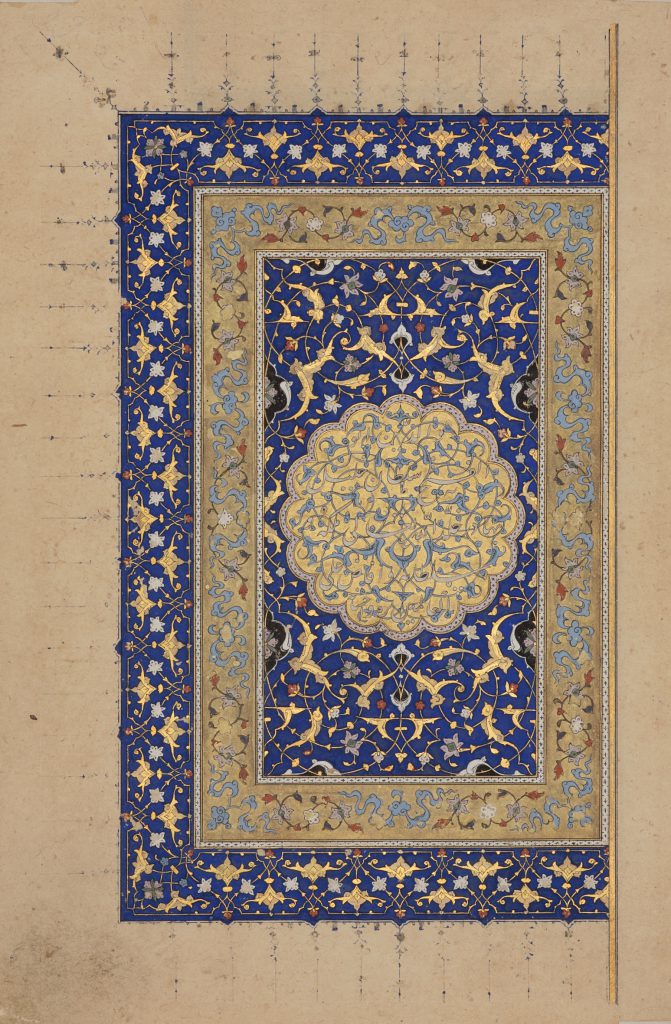



Title: Frontispiece with a Dedication to Sultan Khalil
Date: datable to 882 AH (1478 AD)
Location: Tabriz, Iran
Materials: ink, gold and opaque watercolour on paper
Dimensions: 1 folio; 20.3 x 13.5cm
Accession Number: MSS 1040
Other Notes:
The recto is half of a double-page frontispiece and bears a dedication to Sultan Khalil, the eldest son of the Aqqoyunlu ruler Uzun Hasan, who reigned for only six months in 1478, in the lobed medallion at the centre of the composition. With its chinoiserie repertoire of florets and cloud scrolls and the indigenous tradition of split-palmette arabesques, the exquisite delicacy of the illumination represents a perfect synthesis of the Timurid and Turcoman traditions. It foreshadows Qur’anic illumination under the early Safavids, and the luxuriant design of the fine carpets woven for them.
Script:
text (on the verso) copied in nasta‘liq script
Bibliography:
J.M. Rogers, The Arts of Islam. Masterpieces from the Khalili Collection, London 2010, cat.205, p.173.
Zoom
Close

Create your own collection of artworks that you can print or save as a PDF. Please enter you email to enable feature.
Small Flask | JLY 1075
Has been added to your collection.
TIP:
You can now access and view your collection from the main menu at any time.